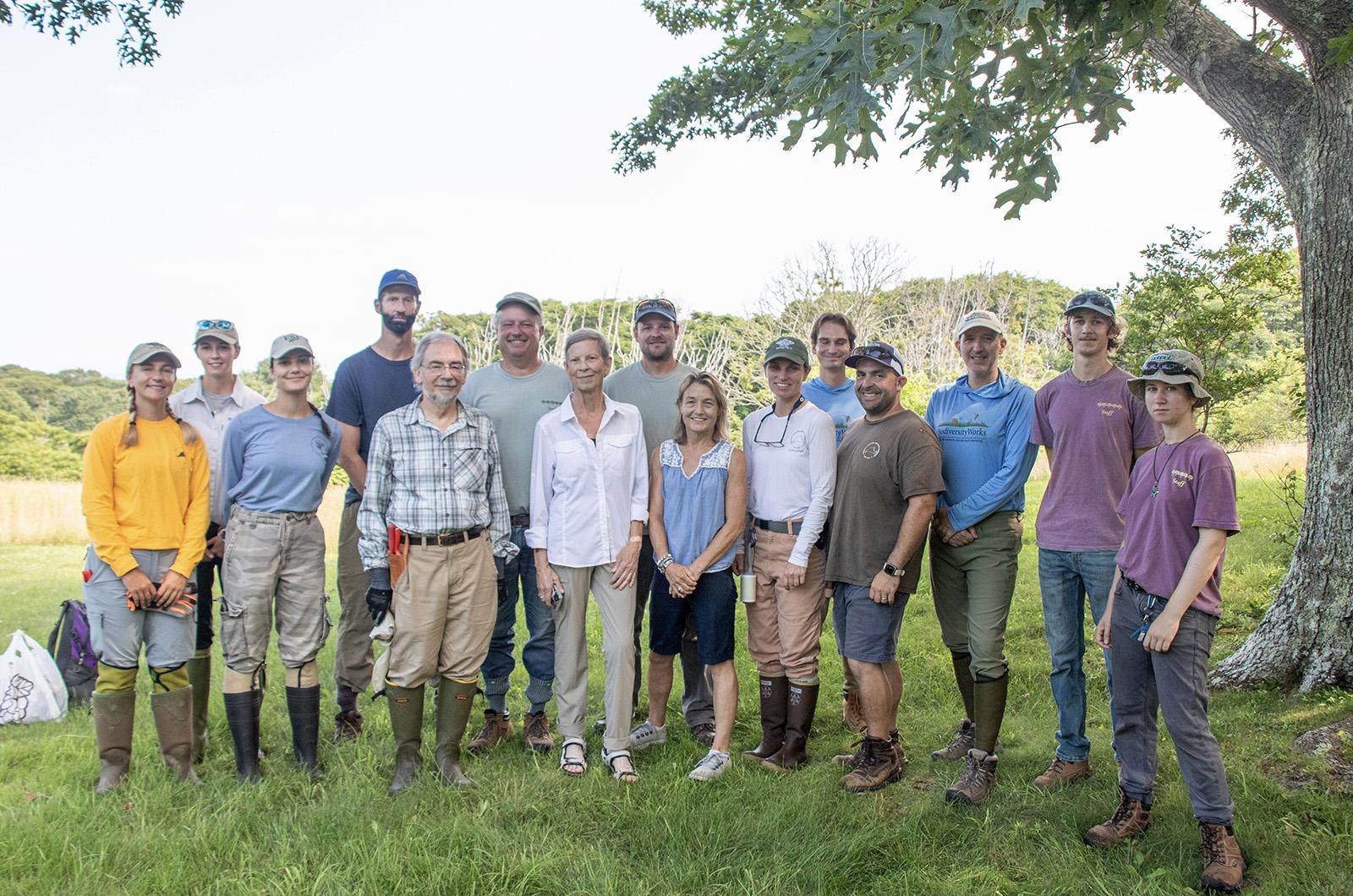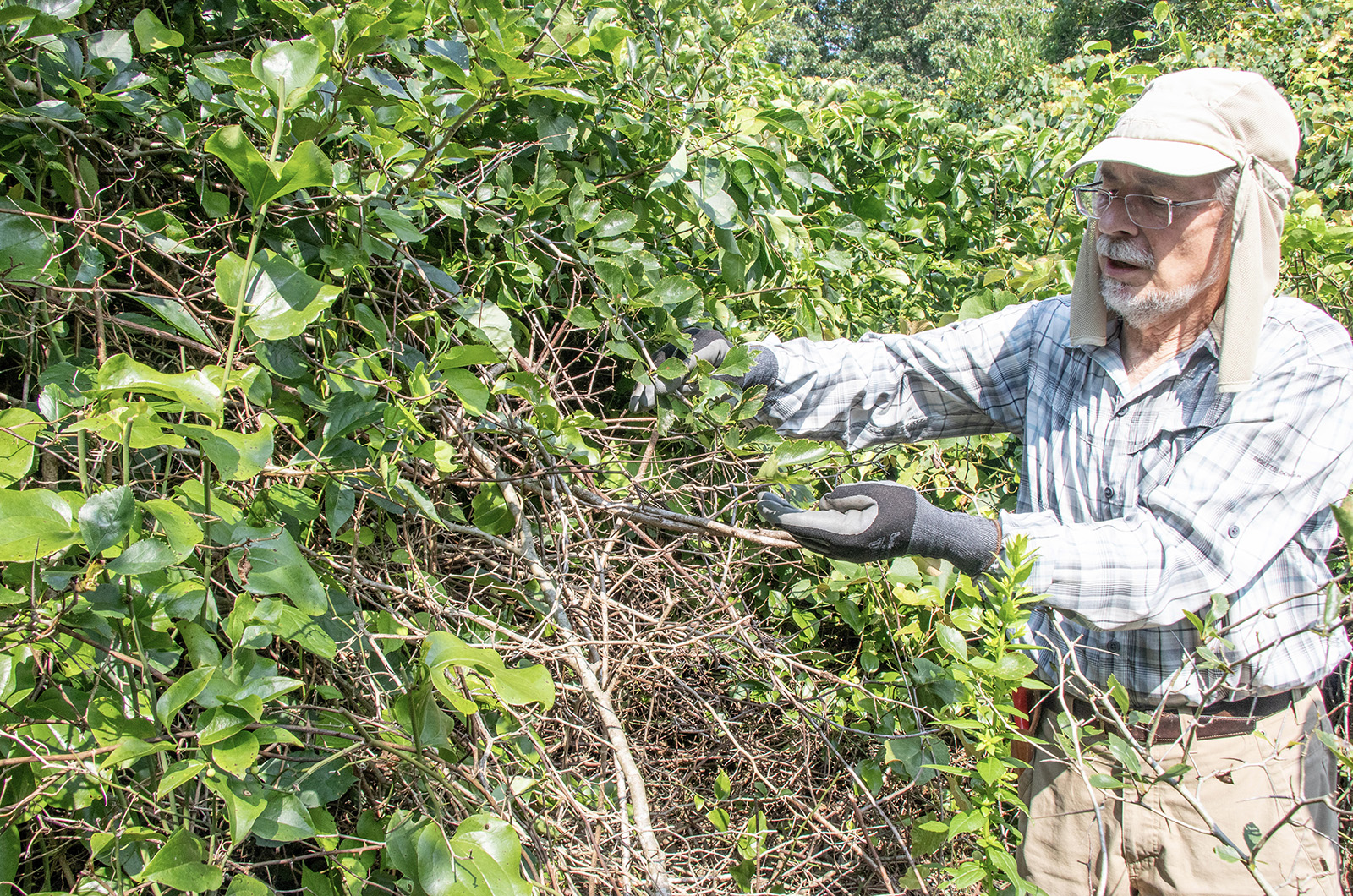Centuries ago, the branches of cleft-leaved hawthorn trees, covered with two-inch thorns and adorned with budding white blossoms, could be seen all over the Island.
Now only about 30 remain.
On Wednesday, a rescue effort involving 15 local environmentalists was undertaken at the western edge of the Island to save two of the endangered species. The trees were almost entirely swallowed up by encroaching vegetation. The team arrived with shovels and pruning tools and slowly peeled back a tangle of vines until the trees glistened in the sunlight.
The team on Wednesday included officials from the Martha’s Vineyard Land Bank, BiodiversityWorks, Polly Hill Arboretum and Boston-based Native Plant Trust.
The cleft-leaved hawthorn is the only endemic plant on Martha’s Vineyard, meaning it is native to the Island and can’t be found anywhere else. The species is currently classified by the state of Massachusetts as “globally rare.”
Environmentalists suspect the decline is due mostly to habitat loss. According to Margaret Curtin, a volunteer research associate with Polly Hill Arboretum, the extinction of the passenger pigeon could have been a contributing factor. The birds would eat the hawthorn fruit and distribute seeds across the Island with their excrement.
Ms. Curtain and fellow research associate Greg Palermo are leading the charge in identifying the trees on the Vineyard and restoring their habitat. In 2018, they identified their first cleft-leaved Hawthorn population in Edgartown. The exact location of the trees cannot be disclosed because Massachusetts prohibits disseminating information about the location of listed rare plants.
“We were so excited to find them,” Ms. Curtin said. “[I thought] if there’s one population . . . there have got to be more.”
Mr. Palermo said that when they found the trees they were covered with vines. The vegetation is cleared annually but it wasn’t until this year that the Edgartown trees appeared to be healthy.
They are hoping to achieve the same result in Aquinnah.
Kathryn Robinson discovered the two Aquinnah trees a year ago when she invited Island naturalists to study the flora and fauna on her property.
“[The trees] landed on a property with an owner who’s going to make sure they stay,” Ms. Robinson said. “I’m really grateful we made the discovery.”
Ms. Robinson encourages others to learn about the plants on their property and said anyone can help make a positive impact on the Island’s ecosystem.
“The goal is to get Aquinnah excited about the hawthorn effort... to actually find out where they are,” Ms. Robinson said. “There’s got to be more here.”
Mr. Palermo and Ms. Curtin also want to get the word out and ask anyone who thinks they have discovered a cleft-leaved hawthorne tree to alert Polly Hill Arboretum. They said to also consider taking a picture and posting it to iNaturalist, a social network used to identify species.
“[Cleft-leaved hawthorn trees] are important for pollinators and for birds,” Ms. Curtin said.








Comments (2)
Comments
Comment policy »